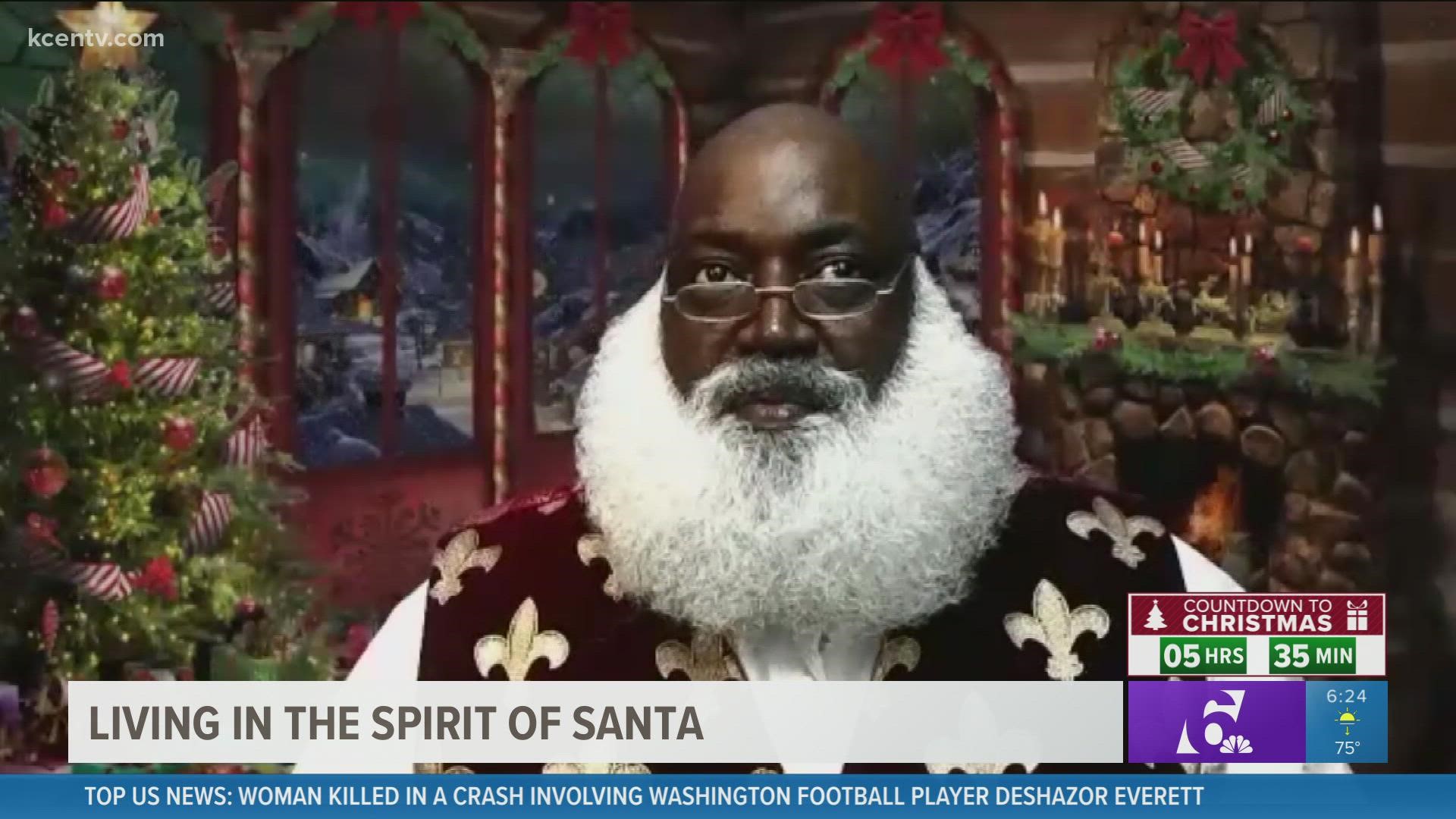DEKALB COUNTY, Ga. — Santa Claus is an icon come Christmas time. Granting wishes, delivering gifts and spreading cheer come with the territory. For people of color, it's rare to see the big man in red look like them.
In Metro Atlanta, there are fewer than a handful of Black Santas that meet families at malls and other private spots around town. One of them is Michael Gamboa, who is in his second season serving as Santa Claus at South DeKalb Mall.
“It’s a serious role, for the Black Santas before and after me, I take a lot of pride in it, and I want to be that person who steps up and fulfills that role to the best of my abilities," Gamboa said.
He said the pandemic provided challenges in interacting with kids who wanted to see him.
"You couldn’t hold anybody, no kids could sit on your lap," Gamboa said. "That was difficult for the little ones because at the time, being little, you don’t understand why you can't sit in Santa’s lap like you always had.”
While some restrictions have eased, Gamboa said kids still cannot sit in his lap, and masks and social distancing are required to meet Santa. Gamboa added that kids were asking for gadgets and games, especially video game consoles, tablets and phones.
"I’ve had a young lady this week ask me to be adopted," Gamboa said. "Her one wish was to be adopted by a family. Another young man, he was in a wheelchair, and he was rolling really fast to get to me. The closer he got, I noticed both his legs were amputated. He was 10 years old, and full of joy and life. I said 'this guy’s got a lot going on.' If I could bring just a little joy into his life, which I did at that moment, it was just a blessing.”
Gamboa said people from all over the country come to visit him, because Black Santa Claus's are so rare. He has met families from Tennessee, the Carolinas, Utah, and California.
Morehouse Humanities Division chair Dr. Clarissa Myrick-Harris said the origin of Santa Claus can be traced to the legend of St. Nicholas, a fourth century monk who lived in modern-day Turkey.
"He was probably a man who looked Middle Eastern to even black," Myrick-Harris said. “He inherited a lot of money, and decided he was going to give everything away to the poor, to the needy."
The Morehouse professor said St. Nicholas was known as a humanitarian and an advocate for the oppressed. Myrick-Harris even said Nicholas championed rights for women in his day and helped combat human trafficking. By the 19th century, St. Nicholas' image started to take on more of a European look, Myrick-Harris said. She added in the early 20th century, Santas of color were displayed mockingly, in blackface, to promote buffoonery.
In the 1930s, Bill "Bojangles" Robinson made for a Black Santa Claus for the people of Harlem in New York. By the 1960s, Black Santas became more popular, despite a majority of American media portraying Santa as White.
"Color doesn't matter. It’s the spirit, what he represents," Myrick-Harris explained. "The spirit of giving, of love, of joy and being in the tradition of St. Nicholas, a champion of the poor, the underdogs, the destitute.”
Dion Sinclair, who bills himself "The Real Black Santa Claus," was an insurance salesman before discovering his calling as Santa. Now donning the red suit for over 20 years, Sinclair sets himself apart by waring a fleur-de-lis vest and sporting a fluffy white beard.
“I took the Real Black Santa and I made it mine," Sinclair said. "It’s my brand, it’s my life, it’s who I am. It’s got to be true love. I love doing what I do. I love watching the kids smile. I love watching the parents smiles, because the parents smile harder than the kids.”
Sinclair said he loves seeing generational growth and joy as Santa, and he said he loves spreading the Gospel of Christ. Sinclair told 11Alive's Joe Ripley he hopes to one day see numerous Santas of all races.
“Kids don’t see color," Sinclair said. "They see the fat man in the red suit. He’s bringing me gifts. Everyone wants to see themselves in what they like. Here’s the deal: one of us is real. You just have to find out which one it is. If you look in the eyes, the magic is there and you know.”

